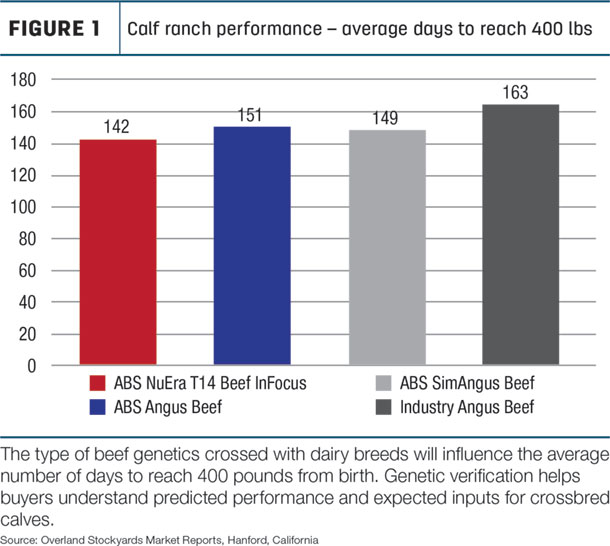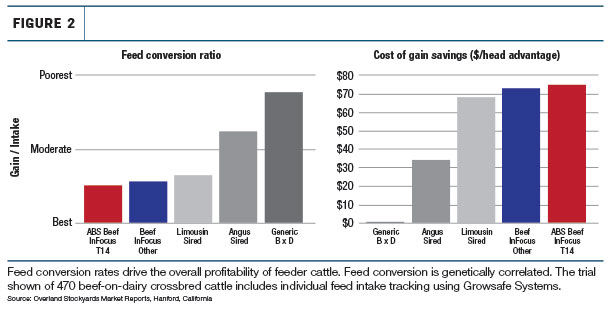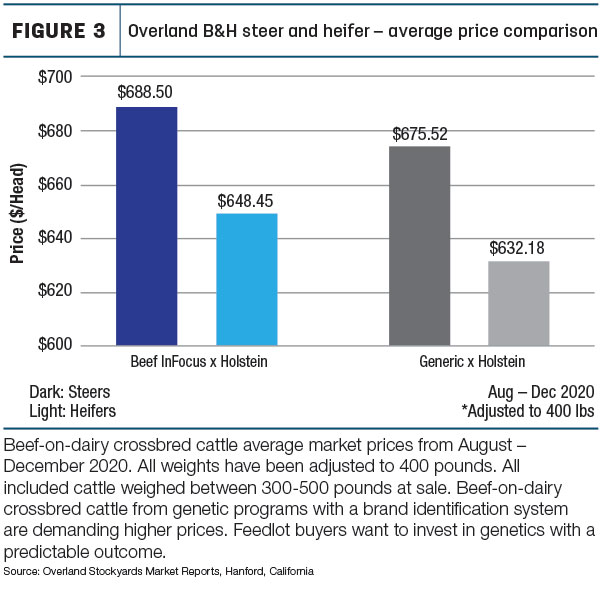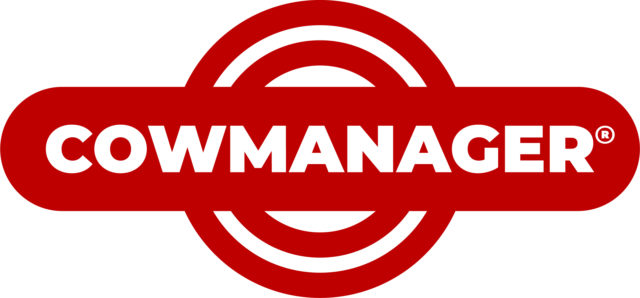Price-taker mentality: Use whatever beef bull you need to get the cow pregnant with a black calf. If you don’t care about influencing your price for beef-on-dairy crossbred calves, the genetics you use don’t matter.
But are you leaving money on the table? Will your current market for generic beef-on-dairy calves hold? What happens when the number of beef-on-dairy calves being marketed continues growing and buyers raise expectations?
Many progressive dairies are strategically breeding a portion of their dairy herd to beef sires to reduce excess heifer numbers and cultivate a secondary revenue stream. This is no longer a new concept. However, due to the rapidly growing volume of crossbred cattle, buyers are becoming increasingly selective about quality. If you want premium prices and broad market access, create what future buyers are valuing.
Beef supply chain pricemakers are demanding quality assurance for consistency, uniform carcass quality and efficient feed conversion rates. A set number of spaces are available at feedlots and on processing schedules. Investors want to fill inventory with cattle that have predictable performance and are marketable to the next stop on the supply chain. Performance is a combination of environment and genetics.
Incorrect beef genetics crossed with dairy cattle can express problematic characteristics on the journey to harvest. These poor-quality cattle can cause supply chain disruptions, unnecessary risks in marketing feeder cattle and reduced total profitability. Some industry members are already blacklisting beef-on-dairy crossbreds from their programs unless crossing breeds can be verified as complementary genetics.
Calf ranch
Genetically ideal beef-on-dairy crossbred calves will have fast growth rates and reach the 400-pound goal quickly to move on to the next stop on the supply chain. They should have fewer days on feed (DOF) and fewer expenses at the calf raiser than their unthrifty, misaligned genetic counterparts.
Beef composite breeds with specific transmitting traits can override detrimental dairy genetics for high appetite and low feed conversions. This has a huge impact on total profitability. A 2020 study shows a more than 20 DOF difference between strategic and general beef-on-dairy genetics (Figure 1). For whoever is paying the calf ranch bill, the accelerated average daily gain (ADG) makes the investment in effective crossbred genetics from the dairy well worth the premium price.

Beef-on-dairy crossbred cattle might change hands several times after leaving the dairy. Sellers want to guarantee quality to the next buyer. Genetic, source and age verification are important to calf ranches or initial purchasers. A genetic brand identification recognized with the USDA Process Verified Program (PVP) helps label calves with specific genetic standards. Ask your genetic supplier if this is something they offer. USDA PVP or USDA Quality System Assessment (QSA) source and age verification allows calves to pass more readily between calf ranches or raising locations and feedlots, as well as opening more markets for the carcass. Since the 2003 diagnosis of bovine spongiform encephalopathy (BSE), cattle traceability has played a large role in export market accessibility and consumer confidence.
A third-party program example with a record audit process certified under USDA PVP standards is IMI Global, a division of Where Food Comes From Inc. (WFCF). This solution helps traders purchase authentic cattle. The value-added verification follows cattle along the supply chain from start to finish.
Feedlot
The words “fewer days on feed” will make any feeder cattle owner’s ears perk up. Cattle will be at a feedlot from 400 pounds through harvest. Quick turnaround from feedlot to harvest equals low inputs and improved profit margins. Just like at the calf ranch, the priority genetic trait is rapid feed conversion (Figure 2). Produce more pounds of saleable product with less inputs.

You only have one generation to breed this trait in and minimize the dairy breed’s characteristic slower rate of gain. It is important to select beef sires proven to work on dairy breeds. Remember, beef expected progeny differences (EPDs) predict beef genetic performance when crossed with beef cattle of the same breed. Choose beef sires with predicted performance for your dairy breed cross for the greatest accuracy and marketability.
Predictable, consistent growth is essential. Feedlots forecast finish dates and schedule appointments with packers for entire pens at the same time. The goal is for a group of steers or heifers to finish out at a similar rate. Inconsistent ADG will result in a variety of carcass yields within the feedlot group.
Poor genetic, low performers could have the same DOF and consume similar amounts of feed but add fewer pounds of red meat yield with lower dressing percent. The combination of lighter hot carcass weight (HCW) and potential carcass discounts will result in reduced profitability.
Harvest
USDA grading standards for beef evaluate the product quality (tenderness, juiciness and flavor) and yield (amount of usable lean meat). In a perfect world for today’s market, the ideal final product is about 1,640 pounds live weight, Prime quality and Yield Grade 1, with about a 64% dressing percent. The ribeye, carcass weight and backfat are economic indicators if a carcass will reach optimum grades. Dairy breeds are known for excellent marbling, but lack muscling and have undesirable, elongated, narrowly shaped ribeyes and angular loins. Top dollar markets, like high-end restaurants, prefer expensive cuts to have a specific size and shape. Complementary beef terminal traits will correct the dairy ribeye shape and add muscling.
Certified Angus Beef (CAB) premiums generate hype for black crossbred calves, but hide color is not the sole determining factor. The CAB bonus is primarily dependent on carcass benchmarks. Cattle feeders and investors seek out verified genetics to minimize carcass quality risk. It is easy for buyers to get burned paying a premium for generic black calves if carcasses are disqualified on CAB carcass quality standards.
Dairy-type animals will also be discriminated against based on frame. In addition to Holstein genetics being taller, poor feed conversion genetics might cause them to be on feed longer than normal. They will continue to grow in height as they age. The size variations can cause disruptions on standardized processing lines. Ideally, for sake of efficiency and ergonomics, all animals would be a uniform size. Large frames can cause health violations if heads touch the ground and delays if equipment or process adjustments are needed. Processing line delays can cost thousands of dollars per minute. Because of this, some plants have even started refusing cattle who are taller than 58 inches at the hip.

Post-harvest
Verification is beneficial throughout the supply chain, but critical to premium prices at harvest. Verified identification, traceability and third-party oversight on treatment protocols will determine how broadly a carcass is eligible to be marketed. For example, non-hormone treated cattle (NHTC) verification is required for the European market. Source and age verification are needed for most Asian country export markets. Quality assurance programs and humane handling certifications also support the consumer asking for more food production transparency.
Your best investment strategy
Feeder cattle investors don’t have to play in the unknown quality market anymore. A growing number of high-quality, known genetic crossbred cattle are being traded. Choose your beef-on-dairy service sires wisely.
However, choosing the right genetics and selling day-old calves is not always the best monetary strategy for you. Consider retaining ownership through harvest. Pricing models for some operations reflect this will give dairy producers the highest profit per head. If you are purposefully creating genetically profitable beef-on-dairy crossbreds, you will receive more return on genetic investment if you own the cattle longer.
Instead of feeding extra heifers, designate the resources they would have used toward beef-on-dairy feeder cattle. If space is limited, you can transition weaned calves at 400 pounds to a feedlot. You can maintain 100% ownership and could consider feeder financing programs if additional cash flow is needed.
This secondary revenue stream has a relatively quick cash flow compared to dairy replacement heifers. Dairy heifers will accumulate approximately two years of raising expenses before earning income and usually at least one full lactation before paying back raising costs. Crossbred cattle will pay you back at harvest in about 16 months.
The biggest expenses in the feeder cattle industry are feed and initial cattle investment. You would already be in at the ground floor on owning premium genetic crossbred cattle. Capture the “middle-man” money with retained ownership instead of letting each stop along the supply chain capitalize on your initial genetic investment.








